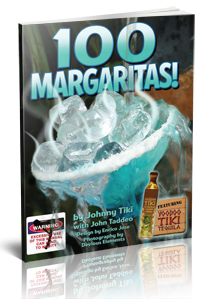Blue agave farming represents a major role in the quality of the tequila manufactured, but is just the starting point of the tequila processing procedure. The way from agave field to platinum tequila or silver tequila calls for several steps, each one will surely have a consequence on the quality of the tequila. How each manufacturer takes those steps is what results in to the considerable differences in the quality of the tequila manufactured. Variables like quality of the agave, agave sugar content, the style of yeasts, production processes and methods, plus the utilization of chemical nutrients or accelerators also affect the flavoring and yield.
As soon as the agave arrive at the factory, tequila processing is made of four prime steps. In the first stage the blue agave hearts are heated to hydrolyze the polymers existing in the plant, mostly inulin, into fermentable sugars. In quite a few factories this stage is reached with the help of stone ovens, in others it is conducted in autoclaves, then again in the most complex factories pressure steaming is put into use. Pressure steaming is a course of action that cooks the agave a lot quicker, while avoiding the wax, sometimes termed the penca or wax, which occurs typically in the plant. Advanced techniques take out the penca best. The more wax eliminated the better because it leads to nasty flavors. The subsequent phase is sugar extraction from cooked agave as a result of milling. The juice extraction procedure plays a role in the concentration of sugars in the wort. Many brandnames employ contemporary crushing machines that press the cooked agave fibers and wash them by using water up to four times, to get the most juice achievable.
Conventional providers implementing the tahona (millstone or grinding wheel) merely add water to the crushed fibres to strain off the juices. In some cases the agave juice acquired through this phase mightbe put together with sugars from other sources, ordinarily sugar cane, producing in a lower quality mixto tequila. The 3rd and most important phase is fermentation during which sugars are changed into ethanol and many other compounds including esters along with organic acids. These, alongside many other elements taken from the cooked agave, deliver the feature flavors and style to silver tequila. It is of great importance to have a very good yeast strain and nutritionally balanced wort for tequila output. Wort, is the liquid produced from the agave milling process to be utilized in the course of the fermentation of tequila. Wort incorporates the sugars that are going to befermented by the brewing yeast to produce alcohol.
The only requirements for tequila fermentation are agave juice, yeast, and water. This combination is quite often termed the mosto, must, wort or tepache. Losses could quite possibly be as much as 35% of the total output if unproductive yeast is made use of or nutrients do not appear in the ideal proportions. In the final stage, fermented wort is distilled, ordinarily by means of pot stills or in many cases rectification columns, to achieve platinum tequila.
At the conclusion of the distillation progression white tequila is acquired. If blue agave juice was the sole source of liquid sugars you’ll get 100% blue agave silver tequila, also known as platinum tequila or blanco tequila. Silver tequila could possibly rest in barrels for up to sixty days, after which it needs to be bottled or kept in steel drums to continue to be a silver tequila. Aging of 60 to 364 days leads to a reposado tequila. Aging in excess of one full year, although less than 3 years results in an anejo tequila. While maturing in excess of 3 years will yield an extra anejo tequila. Aging in white oak barrels is quite often required for rested tequila. The minimum maturation times are required by government polices. At every single step of the manufacturing process, most manufacturers implement various quality control analysis in order to make certain the minimum quality of the tequila and the efficiency of the procedure.



